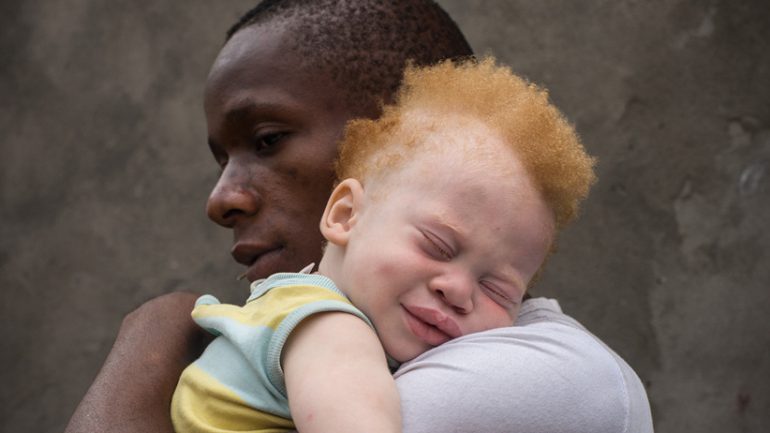Albinism is a genetically condition we don’t see very often. Some may find this group of people weird and others may find them very interesting. What Albinism is mostly known is for its different and unique color that people with this condition have. Basically the absence of melanin pigment in the skin, eyes and hair.
Albinism is recognized in several types OCA1, OCA2, OCA3, OCA4, OCA5, OCA6 and OCA7 with most common albinism-related syndromes: Oculocutaneous albinism, X-linked ocular albinism, Hermansky-Pudlak syndrome, Chediak-Higashi syndrome. Another symptom besides the absence of melanin is the vision problems the Albinos have to deal with.
Considering that parents must be very careful if they see that their child lacks pigment in the hair or skin at birth that affects the eyelashes. Being in touch with their doctor can be very helpful and they can take the necessary precautions. Furthermore, the most secure way to diagnose albinism is through genetic testing to detect defective genes related to albinism.
Some symptoms of albinism related to eye function are:
- Back-and-forth movement of the eyes (nystagmus)
- Can’t keep both eyes at the same point or to move in unison (strabismus)
- Sensitivity to light (photophobia)
- Blurred vision
Moreover the absence of melanin is not guaranteed. People with Albinism can sometimes produce melanin during childhood and teen years.
Even if there’s no cure for this condition it is necessary for Albinos to protect their skin. They can reduce sunburn risks either by using sunscreen or covering their body up completely with clothing.
In conclusion this disorder doesn’t affect lifespan. Thus, people with Albinism must be very careful because ultraviolet rays from the sun can cause skin cancer and vision loss. However, there’s another reason they must be very careful that many of us don’t know. This group of people is at risk of extinction because of their body parts that in some countries are supposed to bring luck.
By Eirini Konstantopoulou, Truth Inside Of You.










yes